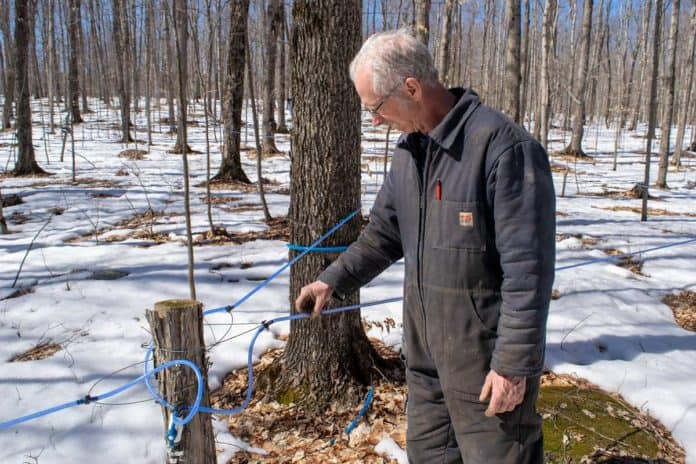
ICE LAKE – Burt Farm is in the midst of syrup season on the 25-acre maple grove it currently has tapped, but the operation is benefiting from much less hands-on labour thanks to the inventive Max Burt’s off-grid collection and pumping network that has delivered his sap to the sugar shack automatically since last year’s season.
“I really hate doing the menial jobs around the farm, so if I can find a way to automate something, I will,” Mr. Burt tells The Expositor on a trip up the road into the heart of his syrup grove. The Ice Lake farmer fed some of his natural curiosities as a researcher at University of Guelph for some years before moving back to the Manitoulin farm. He has been making syrup since his childhood.
After a walk into the forest along a muddy track, we arrive among a sea of blue hosing running between trees.
At first blush, the sugar bush appears much like any other. Closer inspection, however, reveals notable differences in the Burt setup.
Rather than metres of hosing connecting multiple trees as it heads toward a central collection point, groups of three trees all connect to a central stake, which features wider tubing that disappears into the ground.
This means one can walk through the sugar bush without having to climb over or under most of the sap lines.
What happens to the underground tube? It joins other feeder lines below the soil to form trunk lines connecting multiple tree clusters together.
The 25-acre forest plot is divided into four sections; each one has its own trunk line and there are shutoffs at each endpoint, as well as at each three-tree cluster. This allows Mr. Burt to segregate specific sections for cleaning or to control the flow as necessary.
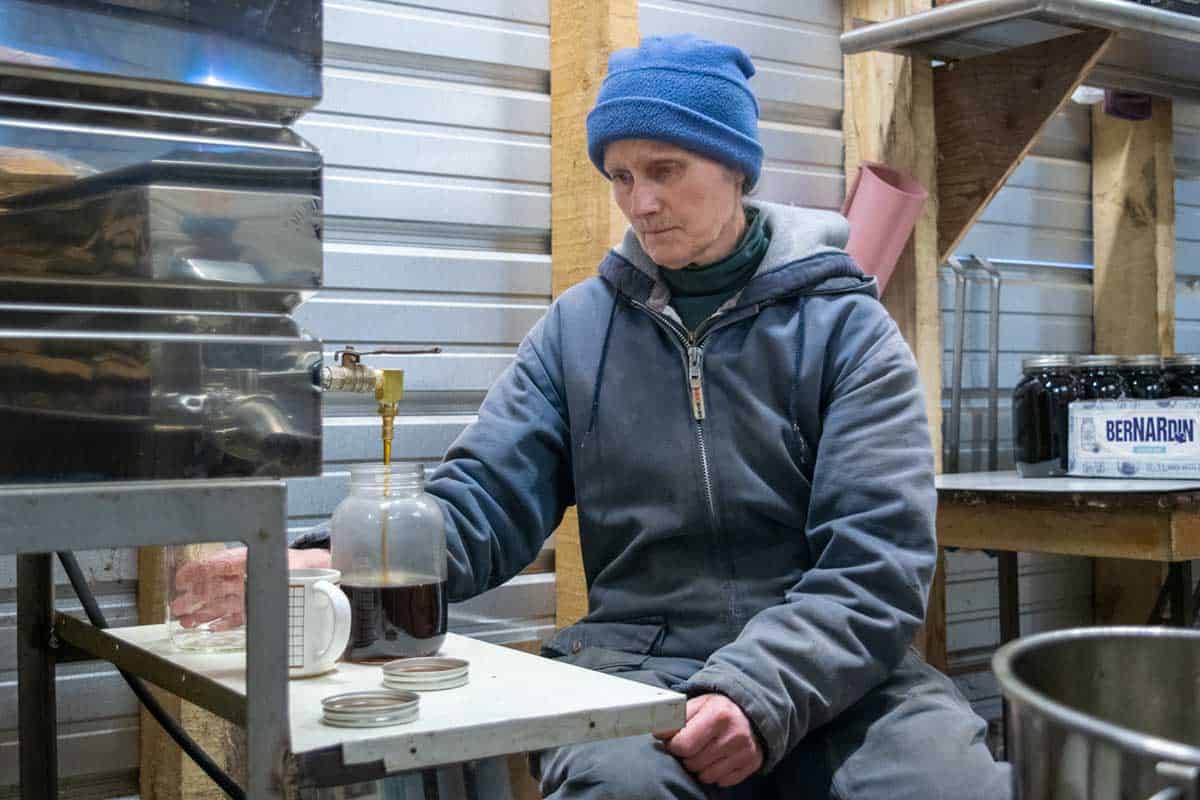
A collection of gear rests at the lowest portion of the sugar bush. A rack with four solar panels stands in a small clearing next to control boxes with inverters and a battery bank, as well as a power cable running toward a round cover on the forest floor.
Under this cover is a small sump pump, followed by a deep, concrete-lined pit with a food-grade plastic reservoir inside. Here is where the four trunk lines enter from the outside wall and a fifth, one-inch pipe lies near the bottom.
A float mechanism is part-way up the container; when the sap reaches a set level, the pump automatically engages and begins to drain the reservoir into the main line.
Meanwhile, at a building 2,500 feet away at the top of the property, the main line enters through a hole in the cement floor of a heated garage. This was all conceived long before the current syrup system came into being.
“I always knew I wanted to put in this system, so I had the hole pre-made in the floor,” says Mr. Burt, adding that the pipe’s appearance in the heated space ensures it does not freeze.
He also pre-installed a drain in the floor of the adjacent room and thankfully found it quickly when he began to use the space.
The main line empties into a stainless steel holding tank, where Mr. Burt shows off a controversial new piece of equipment—a reverse osmosis system. This machine can remove as much as two-thirds of the water from sap, reducing boiling time and the amount of fuel needed to run the evaporator.
Some maple syrup purists say reverse osmosis doesn’t belong in a sugar shack and that it can affect the taste of the end product, but Mr. Burt isn’t convinced. He keeps his unit dialed far below its full power, which still ensures the sap spends plenty of time reducing in the boiler and allowing the sugars to caramelize. Besides, every grove of trees has a unique flavour, so comparing batches can be a futile task.

Ice Lake farmer Max Burt has created a fully off-grid system to automatically gather and send gallons of maple sap up to his sugar shack near the top of his property. The pump runs off this solar array. photos by Warren Schlote
Once through the equipment, the cold sap enters the four-stage evaporator before reaching the end of the meandering contraption. Here lies a temperature probe and an outlet valve.
Mr. Burt fills a bucket full of finished syrup and transfers it into a filtration unit with a small propane burner, where he tests the sugar content with a hydrometer. If it needs more boiling, he can run the burner to finish it off before it passes down through sheets of washable filters and heads to a filling spigot, which keeps the batch at a constant hot temperature.
Mr. Burt’s wife Joanne is filling and batch-numbering the jars on the day of The Expositor’s visit, while son-in-law David Hillyard is the fire-tender. He burns a mix of hardwoods, as well as dry cedar, all scrap wood from old fences or old buildings to minimize the carbon footprint.
While Ms. Burt is in between batches and not running to other jobs around the property, she pulls out the recently-found log book of recent years’ outputs. Some have been as low as 146 litres of syrup, in 2012, to a high of 865 in 2009.
Having an underground sap pipeline has advantages beyond efficiency. The sap stays at a more constant temperature underground which affords it greater quality, and the components are less likely to freeze in the event of a cold snap, meaning Mr. Burt can continue to move sap on frigid mornings.

It’s a sure sign of spring when the sap lines start bubbling their bounty out from the tree trunks. 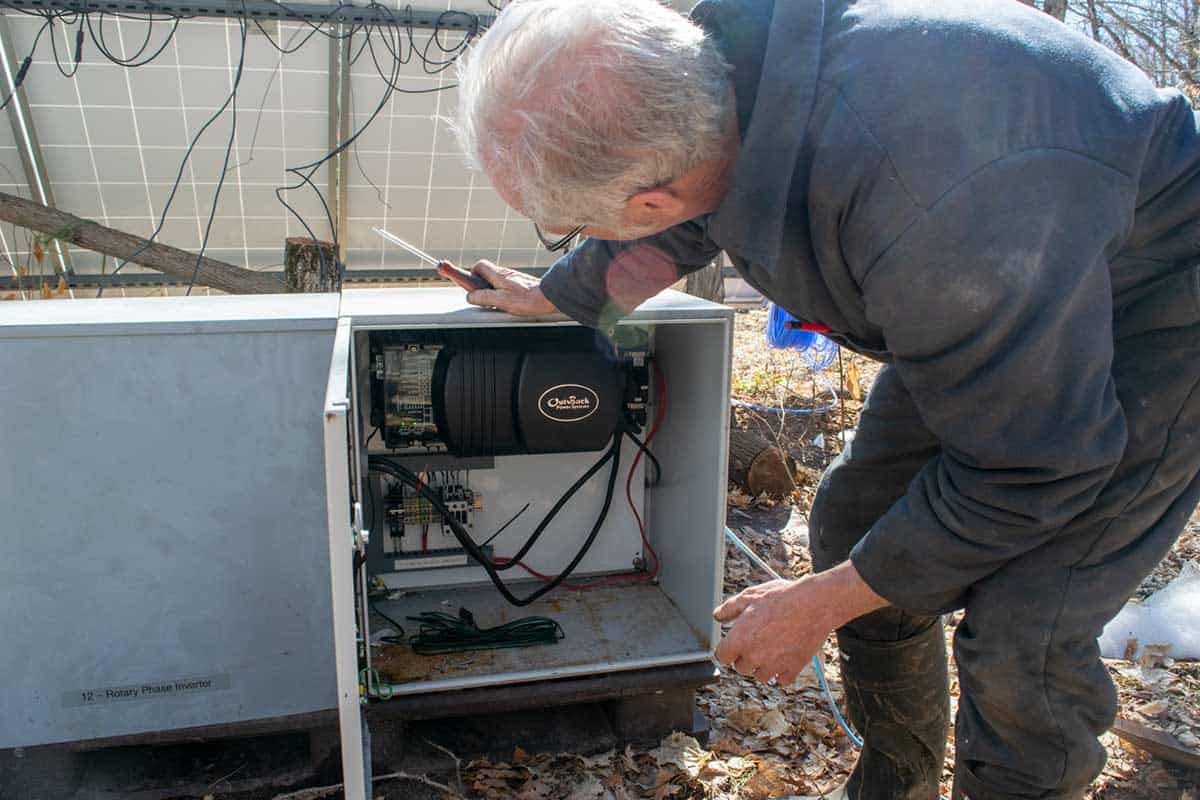
All systems are working at the solar panel array. Mr. Burt finished off the wiring process himself. 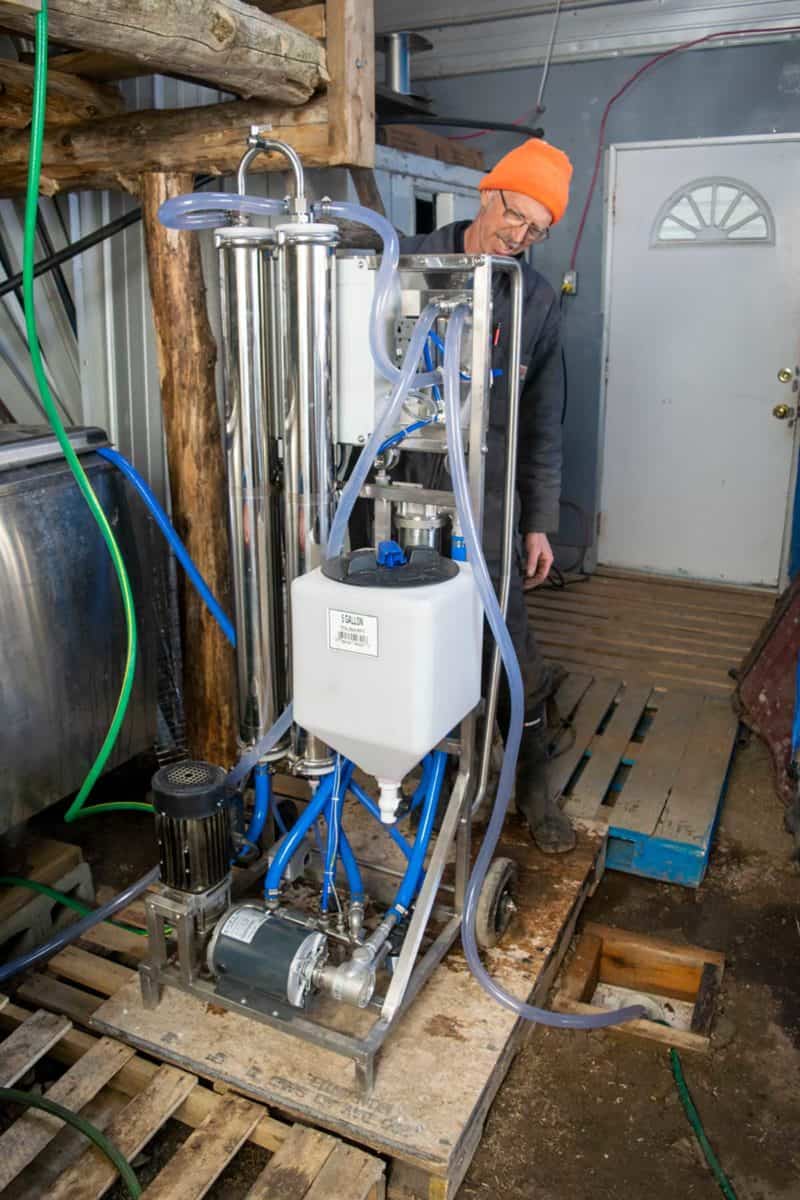
The newer reverse osmosis machine is not yet a well-accepted tool in the maple syrup world. 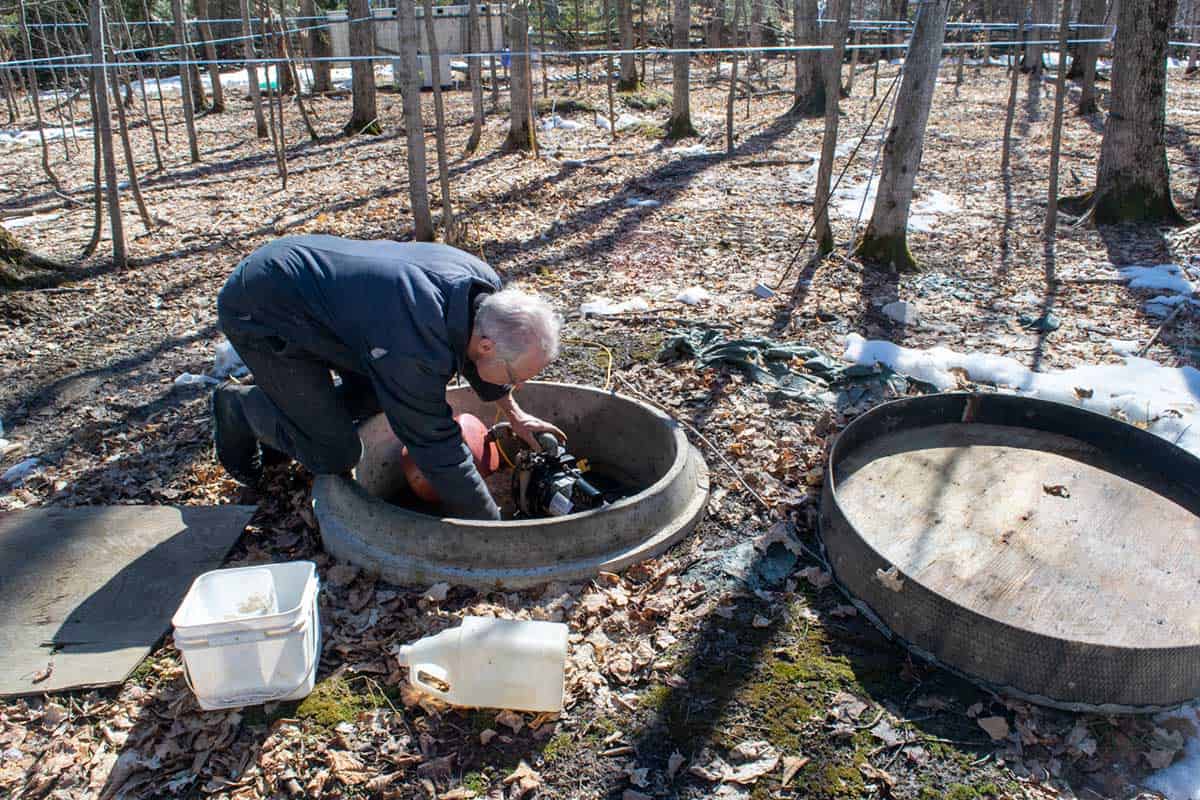
Mr. Burt lifts the cover off the sap reservoir. He landscaped the ground to avoid it flooding.
It’s also a much cleaner, more sanitary way of running the operation with fewer potential contamination sources. It further helps with tree management.
Burt Farm sells its syrup at its farm store but also uses it in certain products like its hams, ensuring they get as much use out of their land as possible.
Future upgrades include adding a flow-meter to track how much sap Mr. Burt draws on a daily basis, as the current model offers no way of tracking the input. But, he says with a laugh, there’s always a new gadget on the market, so his system may never be ‘done.’
“I just like tinkering with things. There’s so many things to offer on the farm, if you can find a way to use them. This is class-four (undesirable) land, but we’ve shown you can still grow food on it,” he says, speaking to his motivation to make new innovations. “The goal, I guess, is to still have fun doing it.”

Mr. Burt dips the syrup with a hydrometer to test the progress on the batch. This one needed just a bit of tweaking to get it in the sweet spot, where the product has enough sugar that it doesn’t mold in the jar, but not too much sugar that it starts to crystallize. 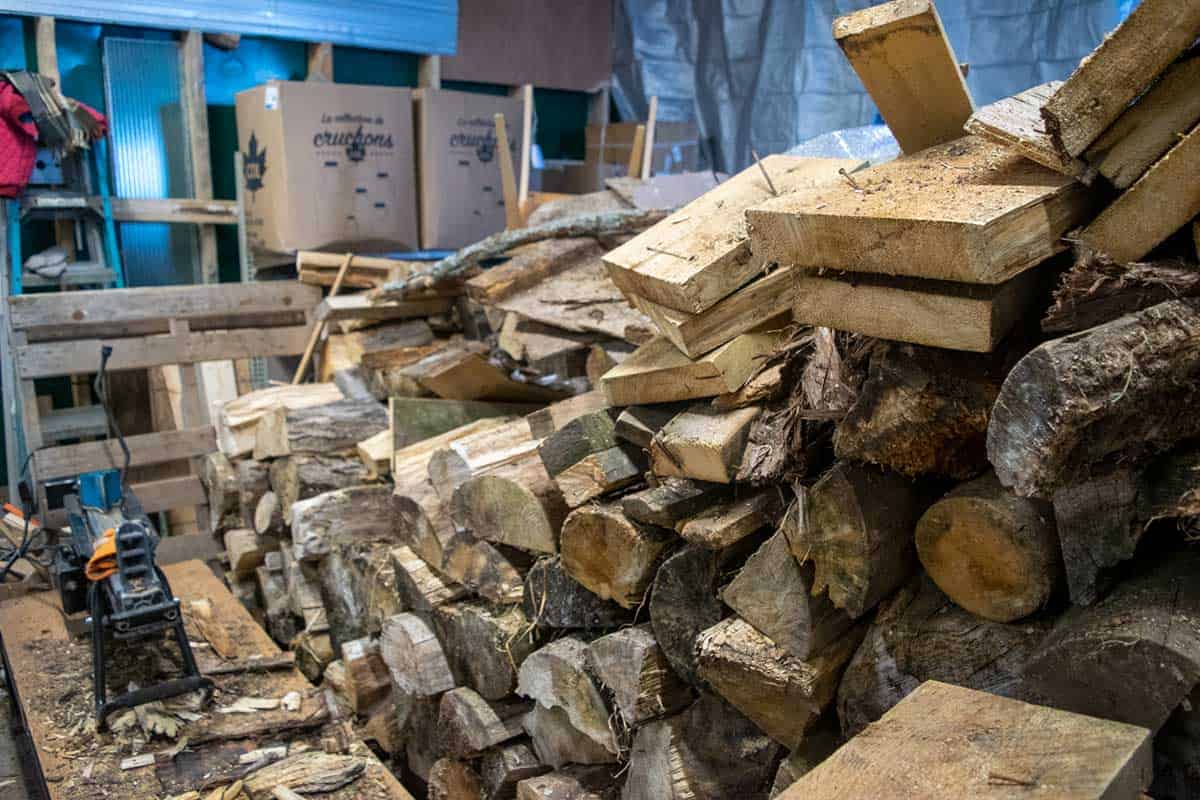
Burt Farm goes through a large quantity of wood to keep the evaporator running at peak temperature, but the family uses scrap, leftover wood for this purpose. They’re not at risk of running out… 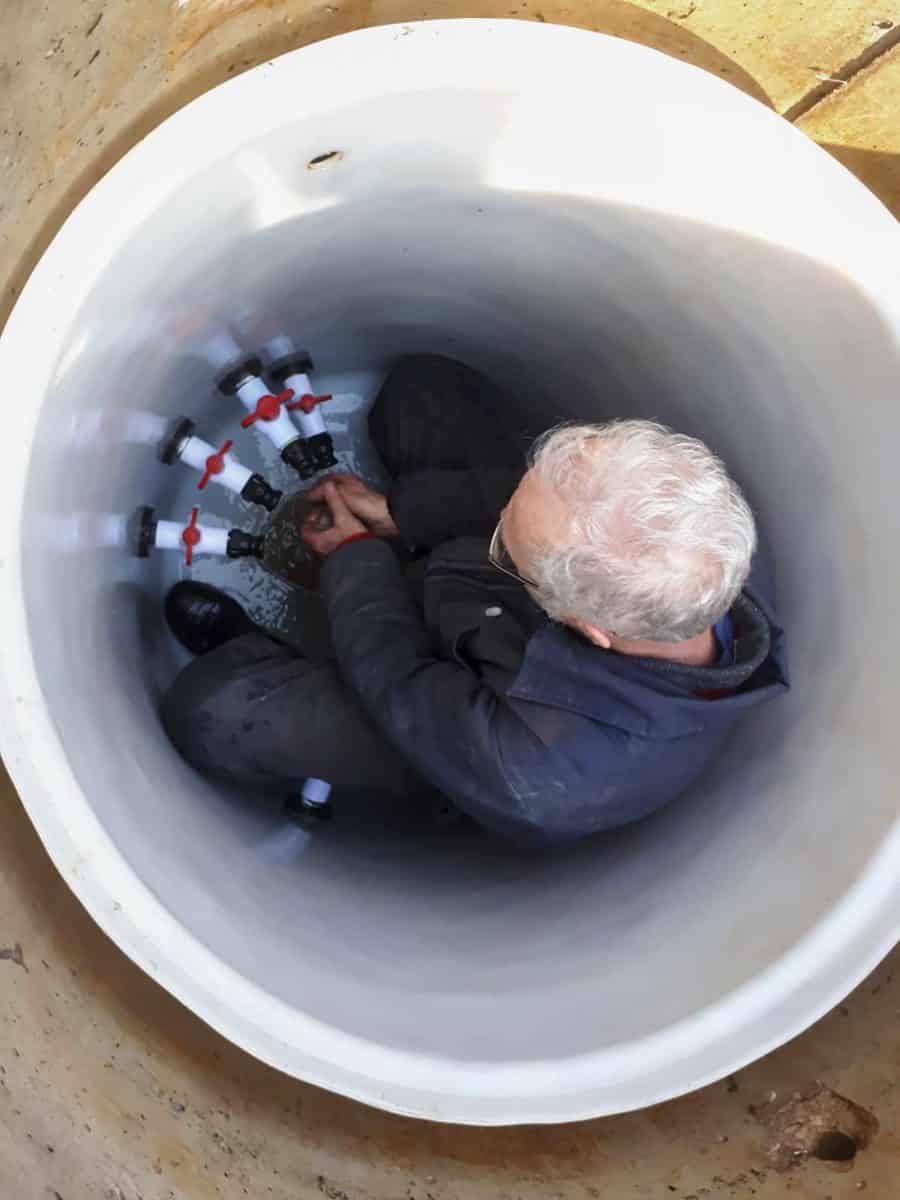
The scale of the forest sap reservoir is evident as Mr. Burt gets down inside to make the final connections on the pipelines before washing out the container to be ready for this season’s bounty. photo by David Hillyard 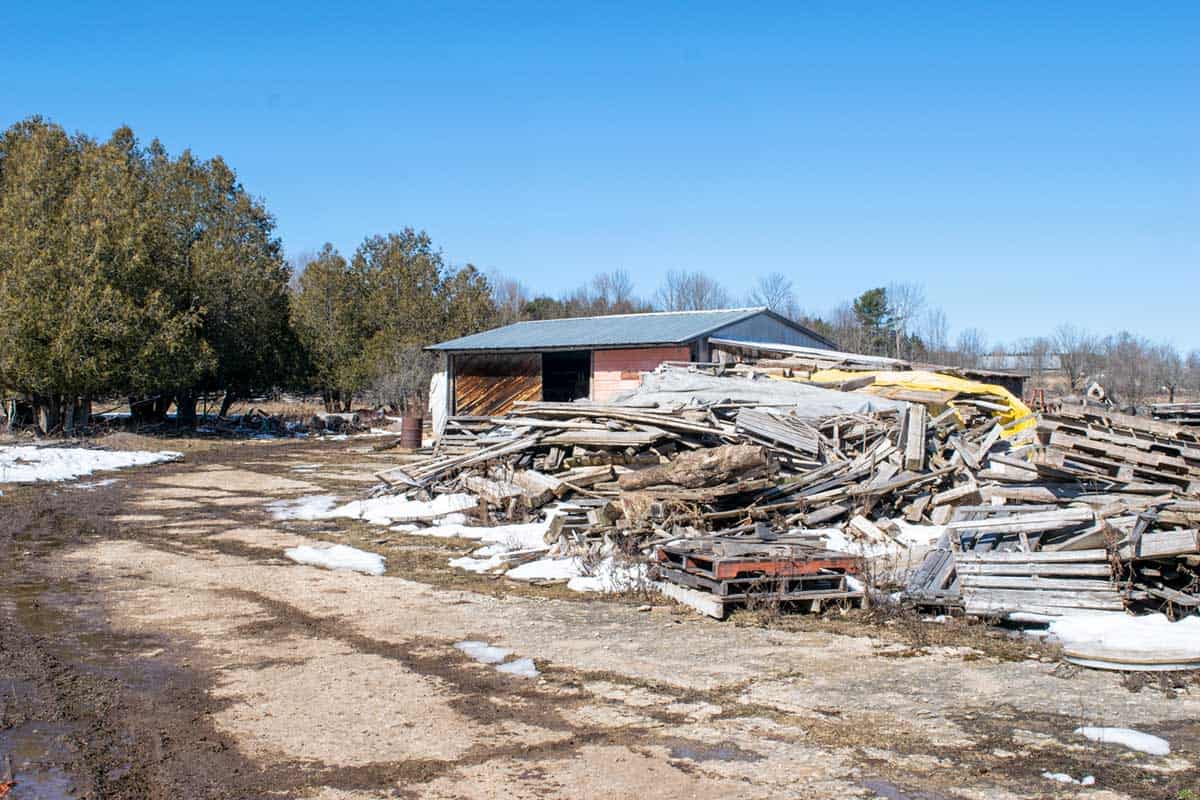
…because on a farm, with fences and buildings coming and going, there’s always a surplus of wood to be found. This pile stands next to the Burts’ old sugar shack, originally built to house a combine.





